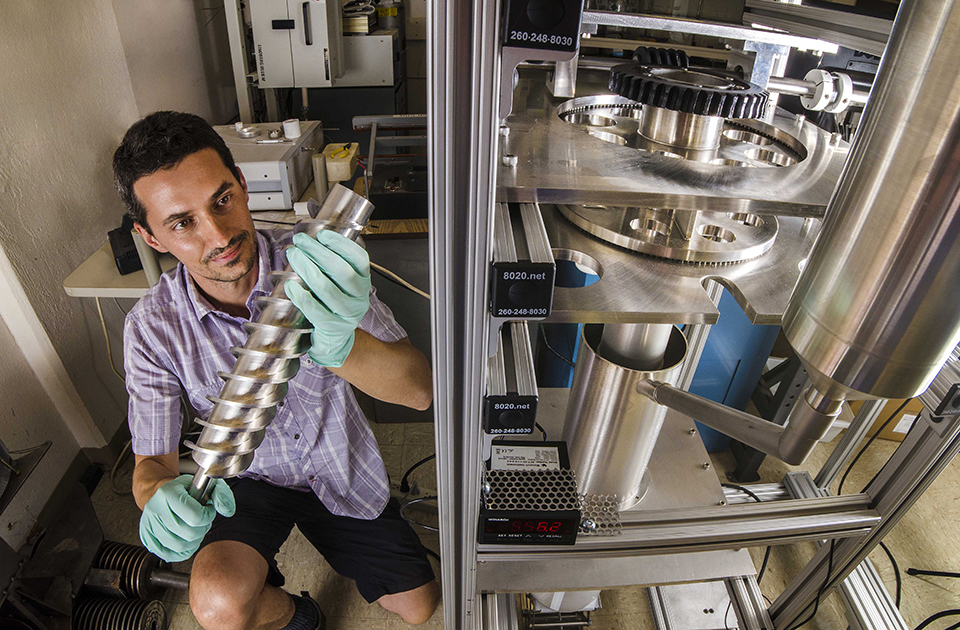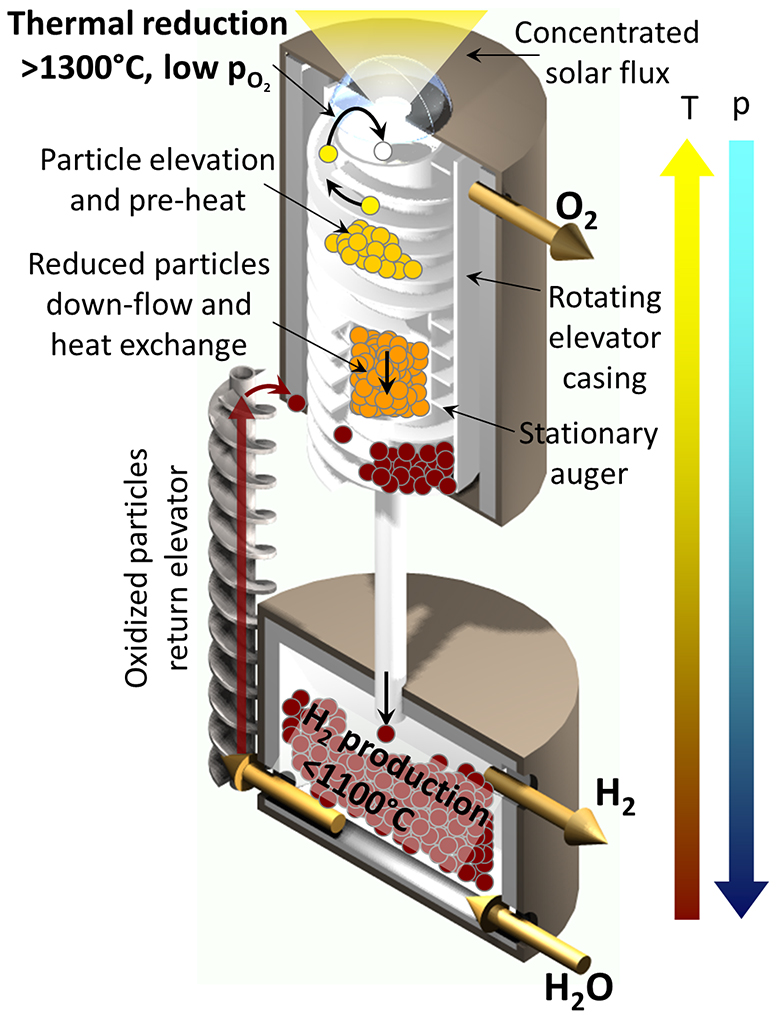Packed Particle Bed Reactor
Solar-thermochemical reactors used for fuel production exist in many forms, each of which offers a unique trade-off between efficient fuel production, thermal efficiency, and scalability. Sandia has developed a solar-thermochemical reactor concept which improves upon each of these categories in a mechanically simple reactor used to produce hydrogen from water. The reactor concept is a promising step toward the practical and economical production of hydrogen fuel using only water and sunlight.

This novel approach to hydrogen production is based on a second-generation version of the Sandia developed CR5 receiver reactor. In order to achieve high efficiency, the reactor incorporates two distinct reaction chambers that spatially separate pressures, temperatures, and reaction products. This is made possible by a moving packed bed of particles. Metal-oxide particles are heated in the upper chamber and pulled by gravity into the lower chamber, where the hydrogen fuel is produced. In effect, the device acts as a solar kiln, similar to a cement kiln, to produce hydrogen.
The Sandia reactor further improves upon conventional solar-thermochemical reactors by incorporating perovskite material chemistry for the metal oxide particles. Perovskite chemistry has the potential for conversion efficiencies that are believed to be beyond the capabilities of more traditional ferrite and ceria chemistries. In addition, perovskites can be effectively cycled at temperatures that are below 150ºC below the minimum temperature required for ceria cycling. By operating at lower temperatures, the reactors can be built using less expensive materials.
- Mechanically simple two-step process
- Intrinsic thermal energy recuperation
- Design and operational flexibility
- Scalability
- Fuel cell technology
- Transportation
- Solar energy

SD#11975
Published10/23/2015
Last Updated10/23/2015